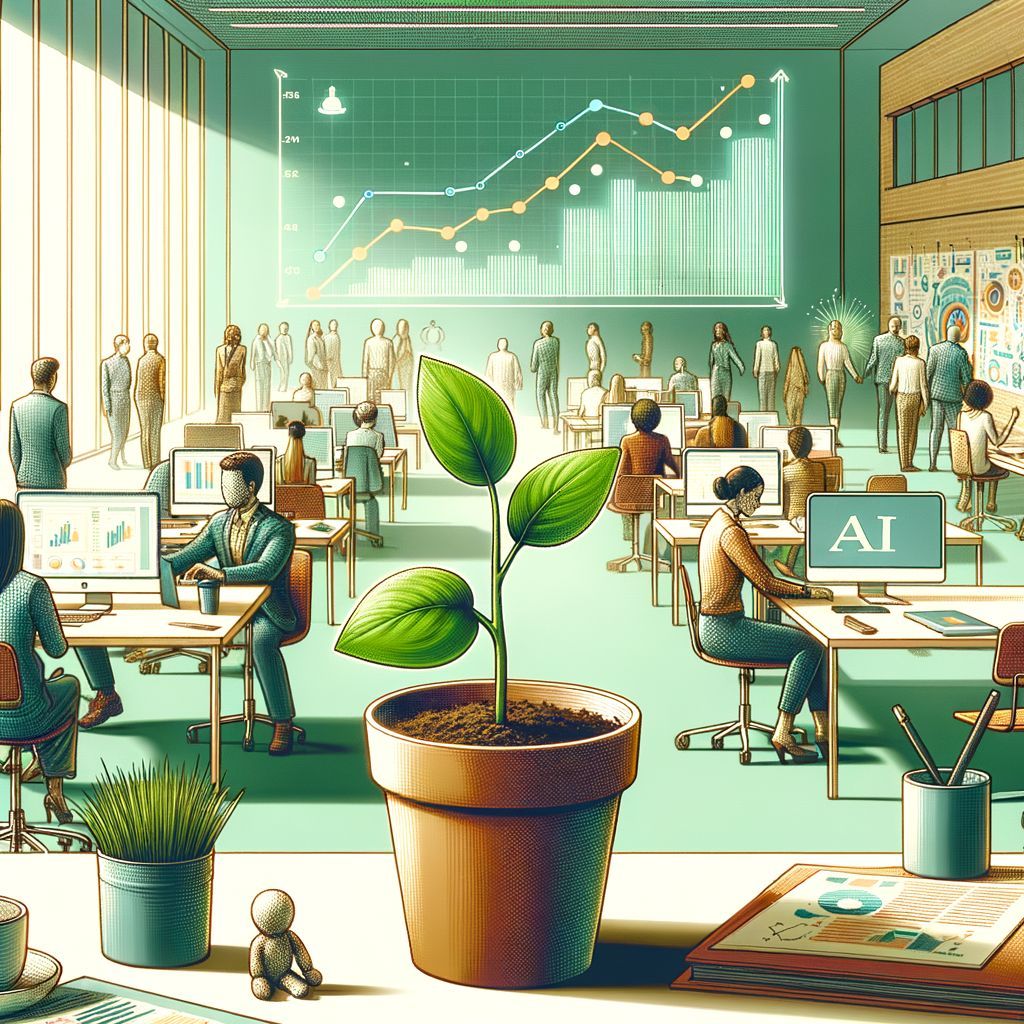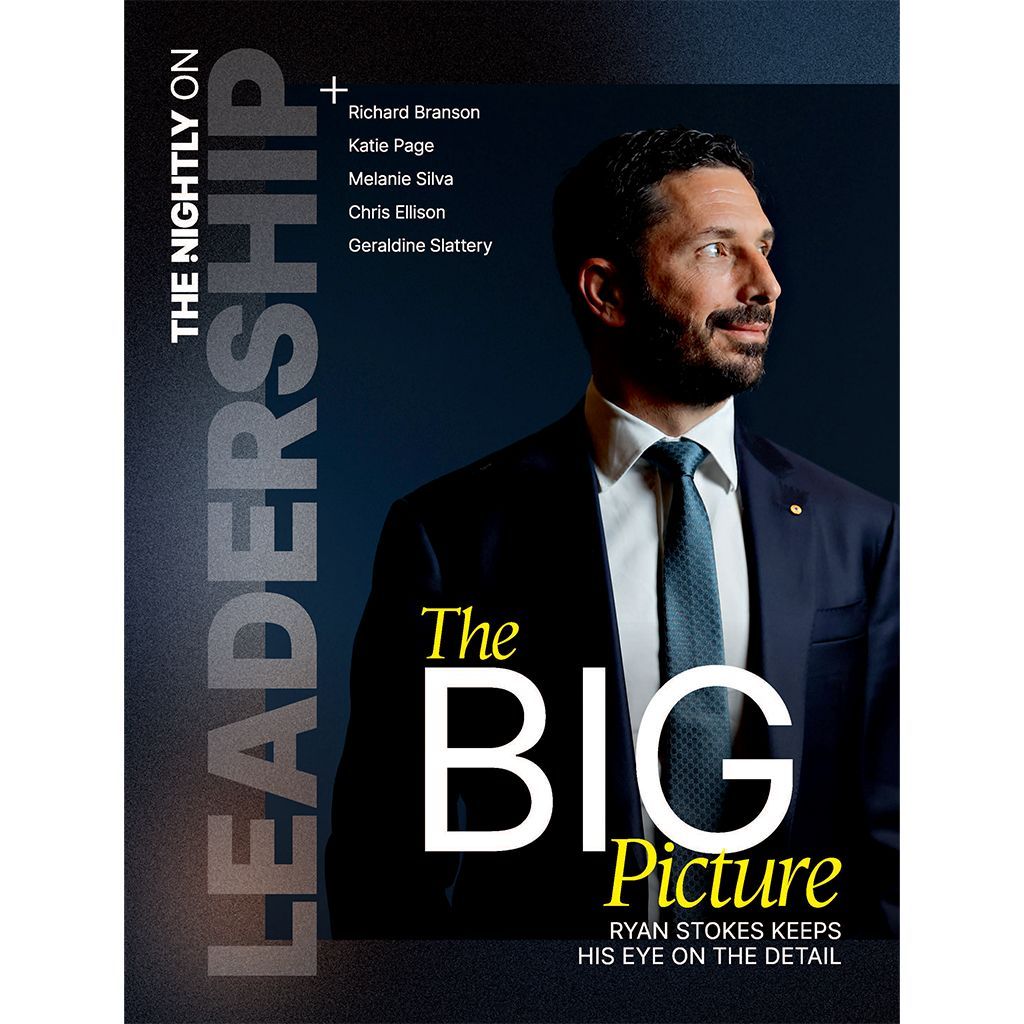

Pic: Midjourney
Editors' Note: Many Fast News images are stylised illustrations generated by Dall-E. Photorealism is not intended. View as early and evolving AI art!

AI's new frontier,
From predictive to create,
Marketers steer clear.

Partner Op-Ed: AI is everywhere, so what’s holding us back?
By Leandro Perez, Senior Vice President and CMO APAC, Salesforce
Whenever I sit down with customers and peers, there’s a buzz about AI’s potential for business transformation.
But alongside this excitement, there’s also a sense of being overwhelmed: Where do we start? How do we navigate the sea of vendors, data privacy concerns, and the readiness of our teams?
Here’s the thing: many of us are already on this AI journey, often further along than we realise.
Just consider the stats — 75 per cent of marketers are already experimenting with or fully implementing AI in some form, according to the recent State of Marketing report.
The transition is happening, whether we fully realise it or not.
From autocorrect to email personalisation, AI is already part of our daily lives and work routines. These everyday uses of predictive AI show that we have a strong foundation to build upon.
Our role as CMOs is to harness this momentum and guide it strategically.
By understanding where AI is already working within our businesses, we can unlock new opportunities and drive significant growth.
A decade of AI innovation: From predictive to generative
The spotlight has been on AI since ChatGPT became a household name, but AI has been transforming how we work for much longer.
Many businesses already have predictive foundations in place, ready to springboard into the next phase of AI.
Salesforce’s AI journey began with predictive analytics. For nearly a decade, we’ve helped businesses harness the power of AI to drive real change.
I’ve seen firsthand how AI can pinpoint areas for significant impact, turning abstract potential into tangible success stories.
Take Mecca, for example. By introducing Miss MECCA, a chatbot powered by Einstein Bots, they reduced chat abandonment rates by 75 per cent, allowing human agents to focus where they’re needed most.
Similarly, when retailer Barbeques Galore transformed its online shopping experience with Commerce Cloud and introduced Einstein Product Recommendations, it doubled online sales while boosting customer satisfaction.
And Spotify increased click-through rates by 53 per cent with customised content, courtesy of Salesforce Personalisation.
AI’s predictive capabilities have a proven track record of using historical data to anticipate customer needs, enhance interactions, and, ultimately, drive measurable benefits for businesses. This has set the stage for where we are today: generative AI.
Generative AI: Building confidence through incremental steps
Generative AI is the natural progression from predictive AI. It builds on existing foundations, using data insights to not just predict, but actually create new content and solutions.
Many businesses are ready for this next wave of AI thanks to robust strategies, connected data, and AI-empowered employees. However, there’s an AI gap between management and their teams.
We found out that the adoption of generative AI varies significantly across organisational tiers. While 82 per cent of managing directors and non-executive directors embrace generative AI, only 39 per cent of junior management and team leaders do the same.
As marketing leaders, we can bridge this gap. We have the opportunity to build trust and confidence in the teams we know will benefit from AI. And the way we can do it is through incremental steps.
The generative AI transformation starts with enhancing our current applications and workflows rather than a complete overhaul.
Generative AI tools like AI assistants that integrate into the flow of work are valuable allies that will help us show our teams that AI is here to help them — it’s not something that’s happening to them.
For instance, integrating Einstein Copilot’s conversational UI with existing systems can make work more productive and enjoyable for employees while delivering better customer experiences. This isn’t confined to marketing — generative AI is proving its worth across departments:
- Sales professionals can use past customer transcripts to gauge sentiment and craft personalised follow-up emails.
- Service agents benefit from AI-generated responses grounded in customer history for faster query resolution.
- Marketing teams receive AI-driven content suggestions based on past purchases and channel preferences, enabling more effective customer engagement.
If teams are upskilled correctly and involved in the process, the shift from predictive to generative AI can be seamless. And those who have already established a culture of organisational innovation and learning are a step ahead.
As everyone experiences the advantages of generative AI, it will become a trusted tool in our daily operations, helping us work smarter and focus on what really matters — driving growth and delighting customers.
Leading the way forward
Take a close look at the AI foundations within your organisation. Where has predictive AI already been at work? What can you build on?
If your organisation has a history of embracing innovation, you’re not starting from zero — generative AI is simply the next step forward.
AI will continue to evolve in the future, but it is well and truly here today. It’s time to understand the practical applications that already exist and the opportunities to integrate them into your business. This isn’t science fiction — businesses are already reaping the benefits of a step-by-step rollout of AI.
So, encourage your teams to explore AI, provide the necessary training, and demonstrate its real benefits. This will build trust in AI and drive innovation and growth.
Together, let’s embrace AI, unlock new opportunities, and help our teams work smarter and deliver exceptional value to our customers.
Partner Content from Salesforce
A Guide to Personalised Marketing That Keeps Customers Engaged
Customer Service Makes a Strategic Shift for ANZ Organisations










